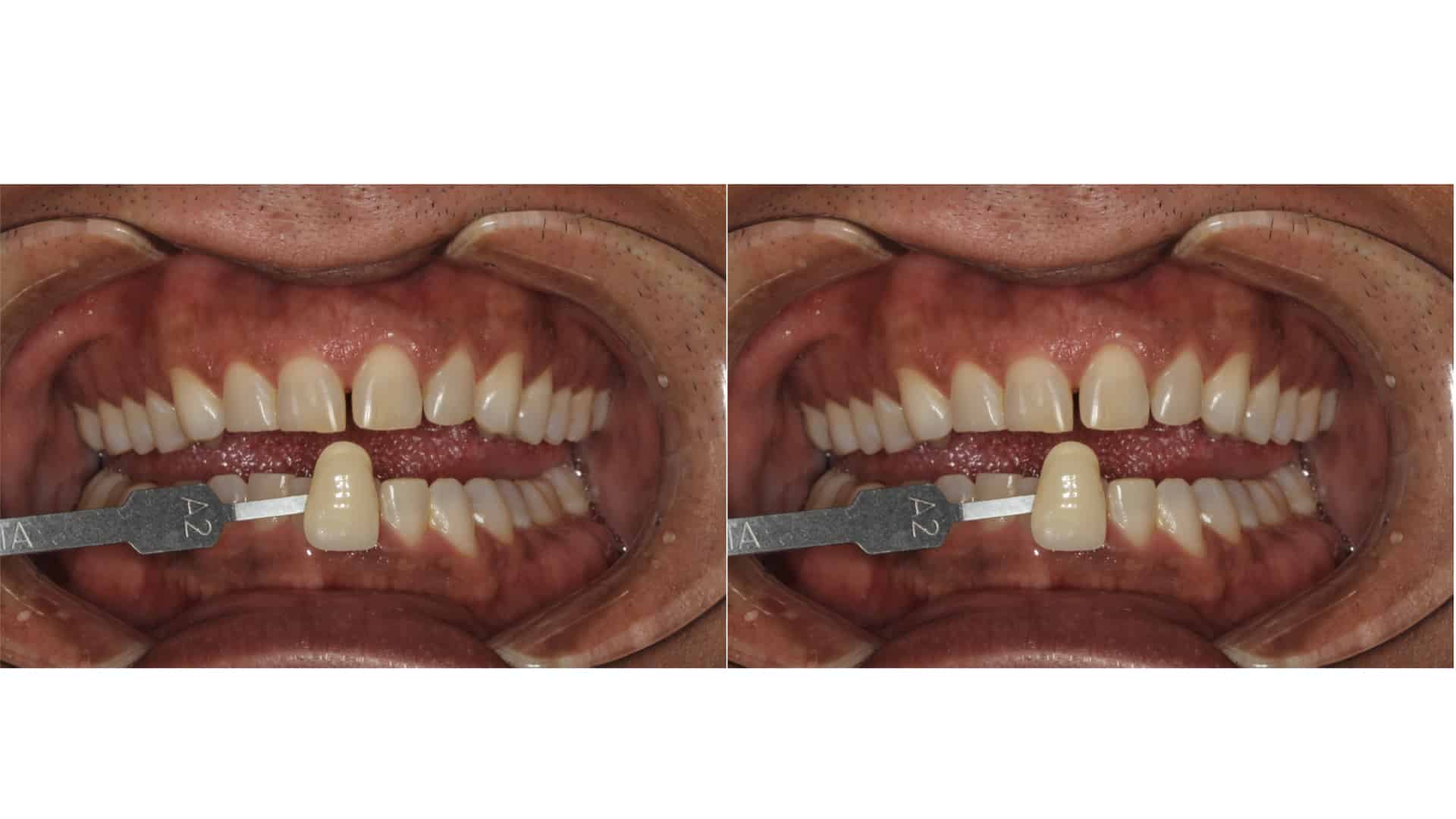Am I really Whitening

Is there an actual shade change?
Tooth Dehydration
Tooth dehydration is a common side effect with all teeth whitening. Once dehydrated, the teeth can look whiter. When rehydration happens (usually a few days), the dehydrated teeth relapse to a darker color. Knowing that teeth dehydrate during Whitening, one may wonder what the actual effects are of quick in-office laser teeth whitening. To better understand how a light source can dehydrate teeth, let me explain. When undergoing an in-office teeth-whitening procedure, the light hits the tooth at a very high intensity. The whitening agent on the surface of the tooth boils off into the air, which is the path of least resistance. Some bleach will infuse into the teeth and allow for some actual whitening. Could it be that there is no real whitening happening and that the teeth are just being dehydrated?
Light During Teeth Whitening
In-office laser teeth whitening, as the light illuminates the tooth, darker colored parts of the tooth absorb the light rather than reflect it. This absorbed light is converted into heat energy. Areas of the tooth like the pulp chamber and dentin are the darkest, so they heat the most. The teeth heat up from the inside. As the tooth builds this uncontrollable internal heat, fluids in the pulp and dentin expand. This expansion pushes the water out of the tooth through the protein matrix surrounding the enamel rods.
Is This Whitening Worth The Pain?
Teeth are porous, so for the same reason, they will allow whitening agent penetration, they will enable fluids out of the tooth. This dehydration, as well as the overheating of the tooth, is what causes the extreme pain reported following light assisted whitening procedures. This whole phenomenon is what makes using a flashlight to bleach teeth ambiguous. The idea is to move Whitening into the teeth for Whitening to occur. With the lights, all the “teeth fluids” could be moving out of the teeth. So the Whitening may have to go against the flow to get into the teeth. This could make for a very inefficient technique, as the whitening agent is always fighting against the current. The final result of this may be that the teeth lose water or dehydrate and appear whiter for a short time, usually around 72 hours. After that, they began to recover and absorb water from the saliva, much like a sponge, and in so doing, they turn dark again.
